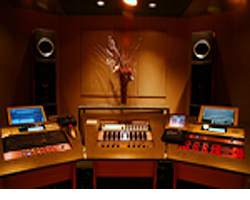
Here is why I have chosen this particular signal-chain:
Pre-Masters
—The Low-End EQ (1) allows you to manage and control the bass frequencies in a track before they encounter any kind of compression. I often find myself working with a bell between 150-400 Hz and a low shelf at 300 Hz. This allows me to find the fundamental of the bass (with the bell) and control its overall pre-compression level and harmonic character. Then, I will use the shelf to control the broad level of the whole low end in relation to the forefront of the low-end, the bass (or equivalent).
—The Low-End Compression (2) allows you to then manage and control the overall tonal character of the low end. Depending upon the release and attack times used, you can target specific frequencies and the overall rhythm (pump–push and pull) of the low end. You are in control of how the low-end rhythm of the song feels! That’s amazing control.
—The High-End Compression (3) (immediately following the low-end compression) isolates a specific part of the chain as compression. The fast attack and release times (possibly PDR) with a low ratio (1:1, 1.5:1) allow the low end compression to be little affected, much as the high end is not affected by the low-end compression. This gives you finer control over the high-end tonal character of the mix immediately following the low-end compression. This compressor gives the same control over the rhythm and envelope of the higher frequencies as the Low-End Compression (2) did for the lower frequencies.
—The High-End EQ (4) is more like a final post-compression EQ, meaning it can not only focus on the higher frequencies in the mix, but as a broadband fine-tuner (with narrow Q-widths and distinct, phase-coherent stereo frequency isolation). This polishes the overall mix and gives it a character “bite,” at which point it becomes your discretion as to how “sharp” or aggressive you want to be with certain frequencies.
The combination of these elements constitutes my pre-mastering process. The way these components are approached, combined, and varied will give each mastering engineer his or her characteristic sound.
The Limiter should be placed on the buss-master during the pre-mastering process to monitor the tonal character of the limiter processing and its overall affect on the tonal character of the pre-masters.
Masters
Although Limiting (5) seems rather harmless, it can be devastating to a master in seemingly slight ways. It is very important to consider apparent loudness versus actual loudness and what the audience would expect. Also, consider the harmonic and rhythmic effects of limiting. Even if you’re not sure exactly what you’re doing, listen for rhythmic, harmonic, and loudness changes as a result of what you’re doing. When broken down into these simpler components it becomes easier to digest and assess. These are simple concepts that the audience will listening for, so it is best to consider them anyway.
Samuel O’Sullivan has been playing various instruments and composing within the bounds and mixtures of multiple genres for more than 10 years. He first established as a drummer/percussionist, has made his mark as a guitarist, vocalist, pianist, violinist, composer, and recording engineer. In addition to producing albums for various bands, O’Sullivan produces his own music under the name “A Mess of a Mind.”
Be sure to visit the Pro Audio Files for more great recording content, and go here to comment on this article.
